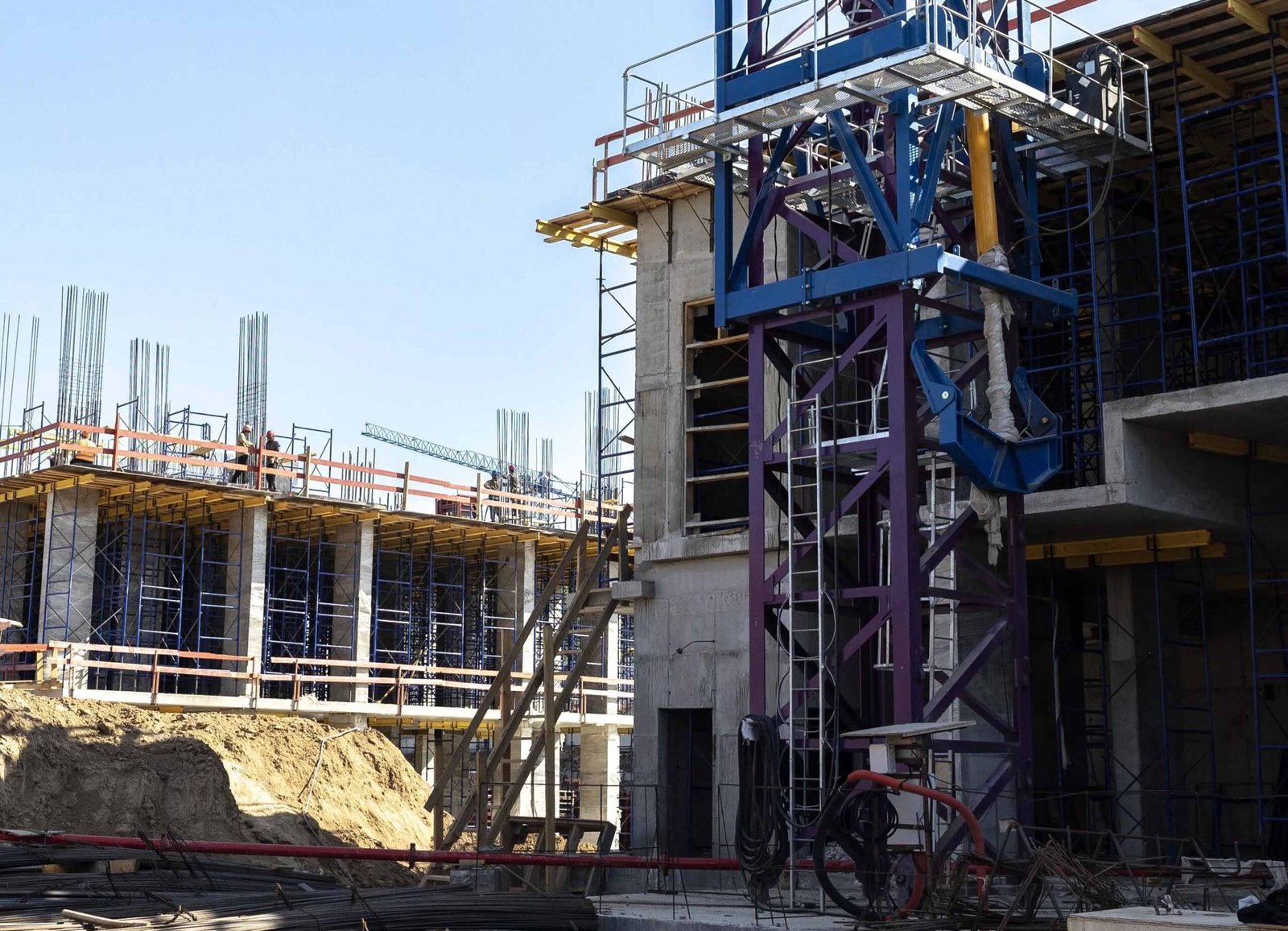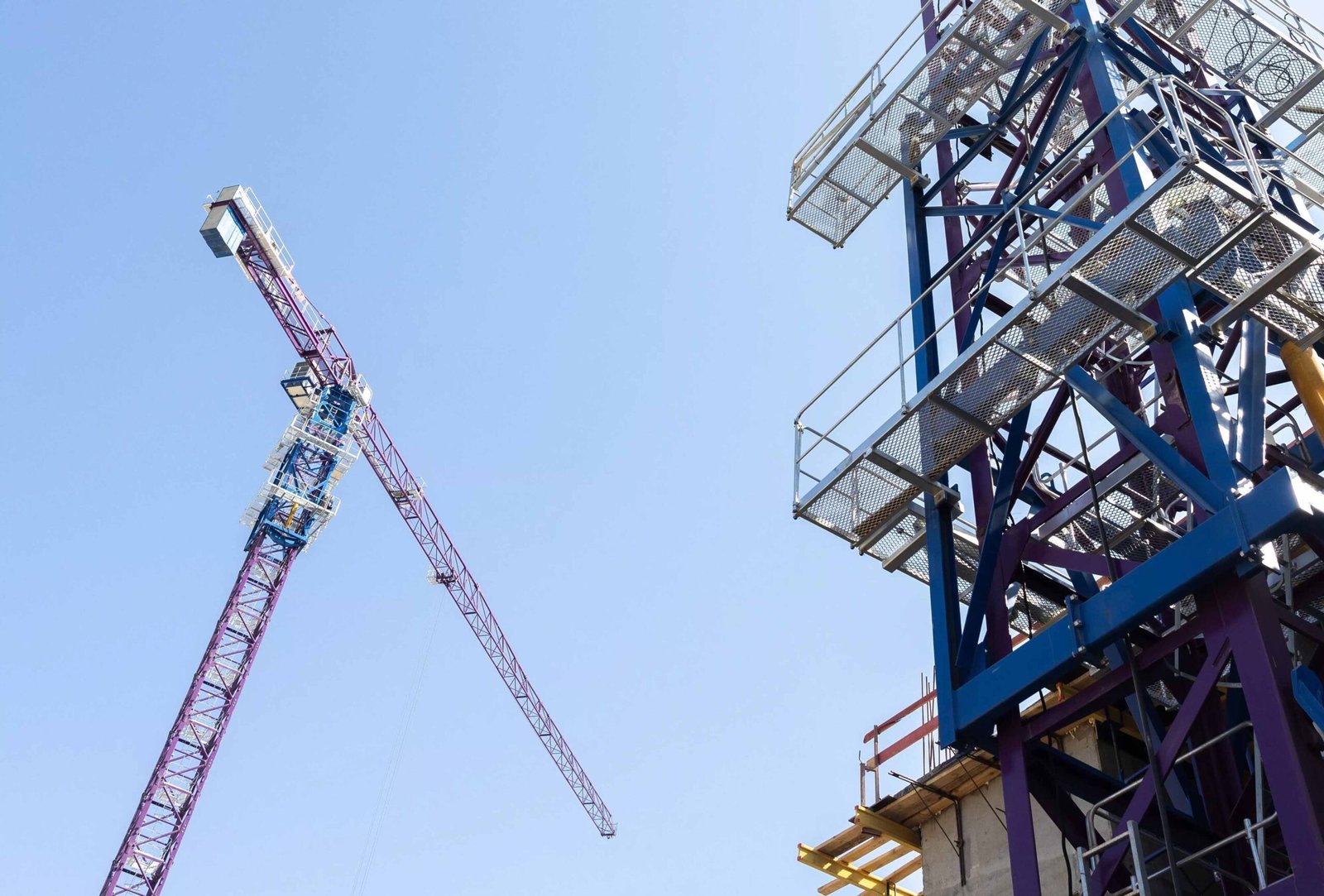
The foundation of a tower crane1 plays a crucial role in ensuring the crane's stability. It's the part of the crane that is anchored to the ground and holds the weight of the entire structure. Without a solid foundation, the crane would be at risk of tipping or collapsing under heavy loads.
The foundation of a tower crane is essential for safe and efficient crane operation. It provides the stability needed to handle massive loads.
Want to know more about the vital role of the foundation in tower cranes? Let’s explore the details!
What is the base of a tower crane2?
The base of a tower crane is the foundation on which the crane stands. It is where the crane's heavy weight is supported, and its stability is ensured. The base typically consists of a large concrete slab3 or a foundation structure designed to prevent tipping, shifting, or sinking.
The base of a tower crane is typically a concrete slab that distributes the crane’s weight evenly, preventing any movement that could cause instability.

The base is critical in stabilizing the crane during operations. It ensures that the crane can safely lift heavy loads without tipping over. For larger cranes, the base will be designed with additional support to handle the increased stress.
Key Aspects of the Base:
- Weight Distribution: The base spreads the weight of the crane over a large area to avoid pressure points on the ground.
- Anchoring: It anchors the crane to prevent movement during lifting operations.
- Size: The size of the base is determined by the crane’s capacity and the soil conditions at the site.
What is the base structure of a crane4?
The base structure of a tower crane refers to the design of the foundation and how it connects with the rest of the crane. It includes the concrete slab, the anchor bolts5, and any additional reinforcement needed for stability. The base structure is designed to handle the vertical and horizontal forces exerted by the crane.
The base structure of a crane typically includes a large concrete foundation slab6, anchor bolts, and reinforcements. This design ensures the crane remains firmly in place during operations.

The base structure must be capable of supporting the crane’s load without shifting or breaking. It also needs to resist the forces generated by the crane’s movements, such as when it swings its jib or when it lifts a heavy load.
Key Components of the Base Structure:
- Concrete Slab: The primary foundation that supports the crane.
- Anchor Bolts: Strong bolts that secure the crane to the foundation.
- Reinforcements: Additional steel bars or other materials that strengthen the foundation.
- Load Distribution: The foundation is designed to spread the weight of the crane and its load evenly.
Why the Base Structure is Important:
A strong base structure ensures that the crane can safely operate at maximum capacity without risk of toppling. It also minimizes the wear and tear on the crane itself, extending its operational lifespan.
How big is the foundation for a crane?
The size of a tower crane's foundation depends on several factors, such as the type of crane, the weight it will lift, and the soil conditions at the site. Typically, the foundation must be large enough to distribute the crane’s weight evenly and prevent it from sinking or tilting.
The size of the foundation for a tower crane can range from 5 to 15 meters in diameter, depending on the crane’s size and weight capacity.

For a small crane, the foundation might be smaller, but for larger cranes, the foundation needs to be much more extensive. A solid, evenly distributed foundation helps prevent tipping and ensures safe crane operation.
Factors Influencing Foundation Size:
- Crane Size: Larger cranes require larger foundations.
- Soil Conditions: Soft or unstable soil requires a more substantial foundation to prevent shifting.
- Load Capacity: The more weight a crane is expected to lift, the larger the foundation needs to be.
Example of Foundation Sizes Based on Crane Types:
| Crane Type | Foundation Size (Diameter) | Weight Capacity |
|---|---|---|
| Small Tower Crane | 5–7 meters | Up to 10 tons |
| Medium Tower Crane | 8–10 meters | 10–30 tons |
| Large Tower Crane | 12+ meters | 30 tons and above |
The foundation size7 is a critical design consideration. It must be tailored to the specific crane being used and the characteristics of the construction site.
What are the main parts of a tower crane?
A tower crane consists of several parts that work together to lift and move heavy materials. These parts include the base, mast, jib, counterjib, hoist mechanism, and operator’s cabin. Each part plays a specific role in the crane’s function and safety.
The main parts of a tower crane include the base, mast, jib, counterjib, hoist mechanism, and operator’s cabin. These parts ensure the crane functions efficiently and safely.

Here’s a quick overview of the main parts:
- Base/Foundation1: Supports the entire structure and ensures stability.
- Mast: The vertical section of the crane, providing height.
- Jib: The horizontal arm that moves the load.
- Counterjib: Balances the crane’s load on the opposite side of the jib.
- Hoist Mechanism2: The winch system that raises and lowers materials.
- Operator’s Cabin3: The control center where the crane is operated.
Breakdown of the Main Parts:
| Part | Function |
|---|---|
| Base/Foundation | Stabilizes the crane, ensuring it doesn’t tip |
| Mast | Provides height and supports the jib |
| Jib | Moves the load horizontally and lifts it |
| Counterjib | Balances the load opposite the jib |
| Hoist Mechanism | Lifts and lowers materials |
| Operator’s Cabin | Controls the crane’s movement and operations |
The base and foundation are just one part of the entire tower crane structure, but they are essential for ensuring that all the other parts work properly without compromising safety.
Conclusion
The foundation of a tower crane is crucial for its stability and safe operation. By providing a strong base for the crane to anchor itself, it ensures that the crane can handle heavy loads and operate efficiently.
-
Understanding the foundation's role is crucial for ensuring crane safety and efficiency in construction projects. ↩ ↩
-
Exploring the design and function of the base can provide insights into crane operation and safety measures. ↩ ↩
-
Learn about the benefits of using concrete slabs for crane foundations and their impact on stability and safety. ↩ ↩
-
Understanding the base structure is crucial for ensuring crane safety and stability during operations. Explore this link for detailed insights. ↩
-
Discover the role of anchor bolts in securing cranes and ensuring their stability during heavy lifting operations. ↩
-
Learn about the importance of a concrete foundation slab in crane operations and how it contributes to stability and safety. ↩
-
Understanding the Base/Foundation's role is vital for ensuring crane stability and safety during operations. ↩






